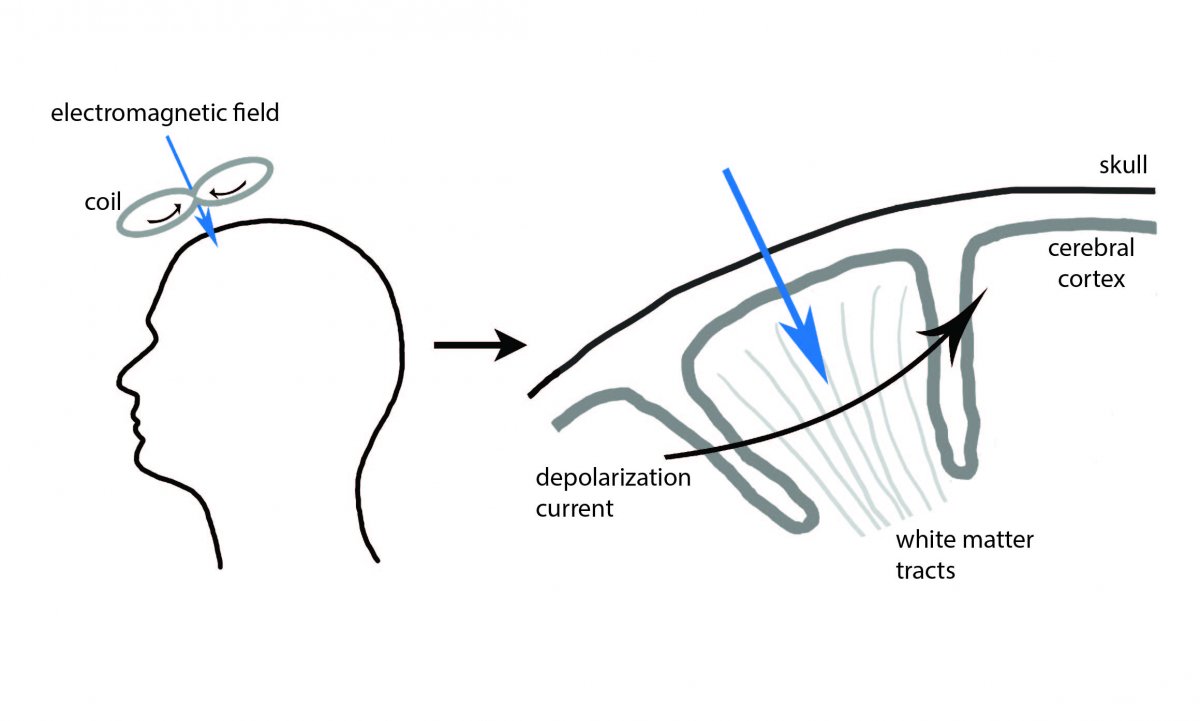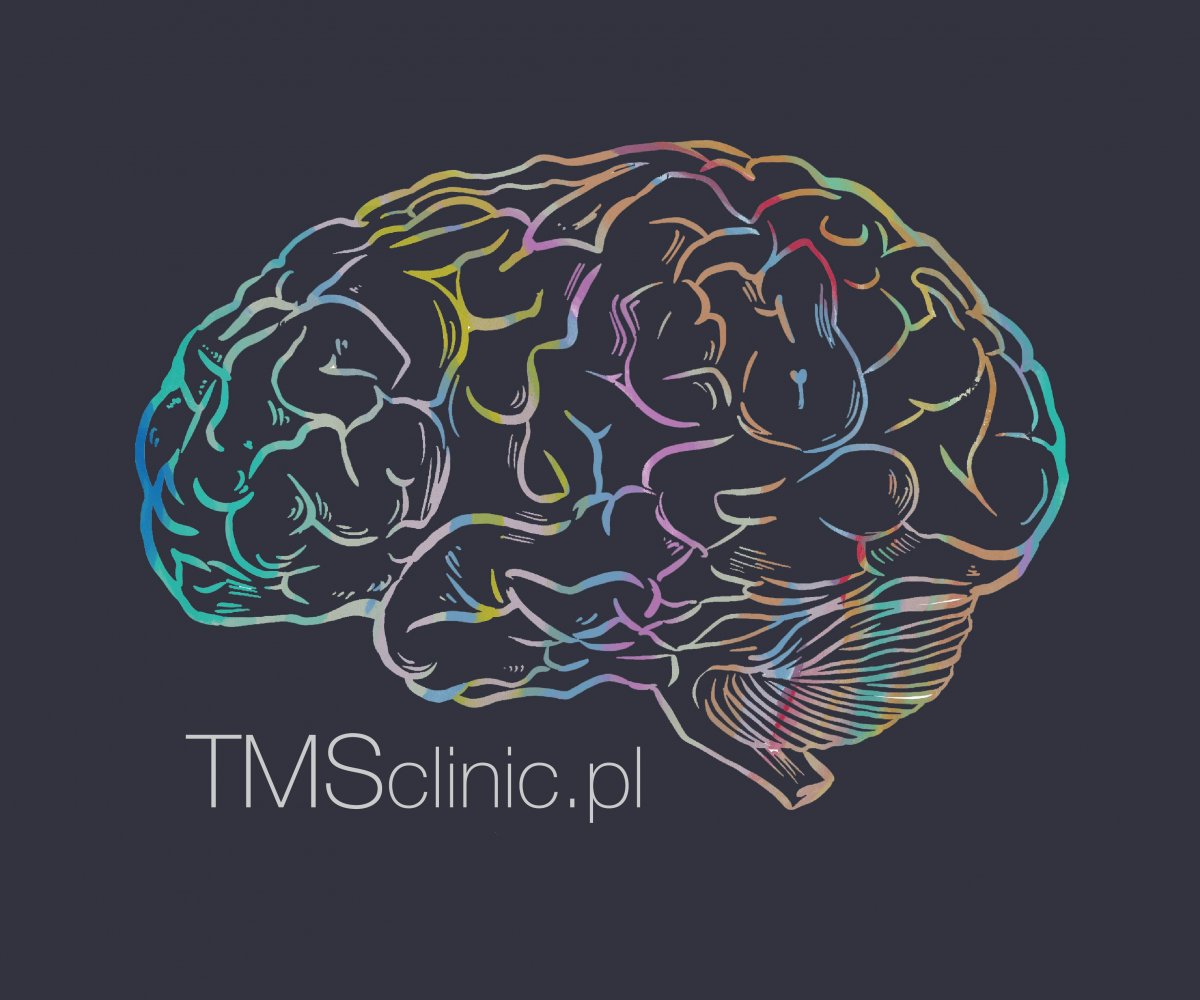What is TMS?
TMS (transcranial magnetic stimulation)
is a method of non-invasive brain stimulation using electromagnetic pulses.
These pulses, generated by a special coil
placed on the head, penetrate through the skin, skull bone and meninges to the
cerebral cortex, where they induce an electric current in nerve cells. Pulses acts on the tissue directly at the application site, and thanks to
numerous connections with other structures, also in distal regions of the
brain.

Depending on the
frequency of stimulation and the protocol used, it is possible to increase the
activity of the cerebral cortex or to reduce its level of excitation, thus
modulating the activity of specific brain regions. The depth to which a single
electromagnetic impulse reaches depends, among other things, on the thickness
of the skull bone and the individual arrangement of furrows in the cerebral
cortex and is approximately 3 cm.
Transcranial magnetic stimulation as a method of brain stimulation and potential therapeutic method was first described in 1985 [1]. Since then, it has become the subject of intensive and extensive scientific research. The first TMS protocol was officially approved as a therapeutic modality in 2008 by the U.S. Food and Drug Administration (FDA) for the treatment of depression. Today, TMS is successfully used in the treatment of psychiatric and neurological disorders as an established therapy not only in the USA, but also in Canada, Australia, Israel, and many Western European countries (in some countries the method is reimbursed). TMS is classified as a non-pharmacological biological treatment.
Transcranial magnetic stimulation as a method of brain stimulation and potential therapeutic method was first described in 1985 [1]. Since then, it has become the subject of intensive and extensive scientific research. The first TMS protocol was officially approved as a therapeutic modality in 2008 by the U.S. Food and Drug Administration (FDA) for the treatment of depression. Today, TMS is successfully used in the treatment of psychiatric and neurological disorders as an established therapy not only in the USA, but also in Canada, Australia, Israel, and many Western European countries (in some countries the method is reimbursed). TMS is classified as a non-pharmacological biological treatment.
Neuroplasticity
Through
its action on nerve cells, TMS enhances the processes of neuroplasticity,
i.e. the brain's ability to create new connections between nerve cells and to
regenerate. Numerous scientific evidences indicate a number of
neurophysiological changes which take place as a result of repetitive
stimulation, ranging from changes in local electrical activity through the
effects on protein synthesis or gene expression, structural changes in the
cerebral cortex and white matter tracts to the change of global brain activity
pattern [2].
All these processes and phenomena contribute to the therapeutic
efficacy of TMS.
Literature:
1. Barker AT, Jalinous R, Freeston IL, Non-invasive magnetic stimulation of human motor cortex. Lancet. 1985, 1(8437):1106-7.
1. Barker AT, Jalinous R, Freeston IL, Non-invasive magnetic stimulation of human motor cortex. Lancet. 1985, 1(8437):1106-7.
2. Chervyakov AV et al., Possible Mechanisms Underlying the Therapeutic Effects of Transcranial Magnetic Stimulation. Front Hum Neurosci 2015, 16;9:303
